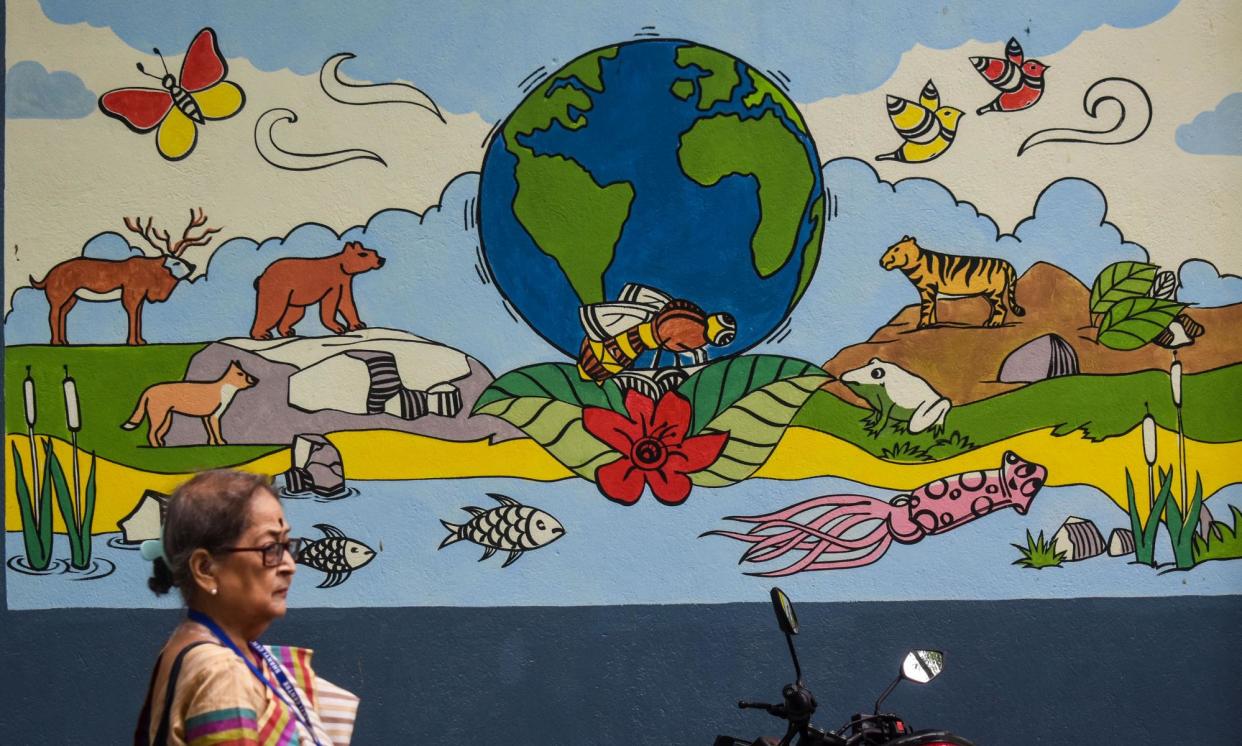By reflecting a world in crisis, art can be a powerful part of the climate solution

The Climate Guardians appeared in Westernport Bay in southern Victoria in February 2021, standing in solidarity with the locals protesting plans by energy company AGL to build a new gas hub in nearby Ramsar-listed wetlands.
They appeared again in front of the Eiffel Tower in Paris that same year defying the state of emergency ban placed on protesters around the Cop21 and then in the heart of Melbourne throughout Extinction Rebellion’s recent autumn activism.
Related: A gardening club is a collective way to grow food, flowers and friendship
Like empathetic apparitions of an imperilled future – the Climate Guardians’ blend of performance art and peaceful protest aims to elevate climate issues into the hearts and minds of those who bear witness. They provide a powerful example of how art can be a potent tool in educating and inspiring environmental action, as well as helping viewers grieve the loss and damage already inflicted.
Raising awareness
Allana Beltran, a self described “artivist”, inspired the formation of the Climate Guardians from an anti-logging protest she performed in 2007, titled Weld Angel, dressed as an angel 10 metres high on a tripod in the Tasmanian forest.
“I hope the angels continue to inspire viewers to recognise that human creativity can go a long way in finding solutions to problems that are too big for the mind to work out,” says Beltran.
“An angel represents protection and higher human potential. Combined with environment and climate change issues, viewers possibly recognise their own human role in solving this collective life-threatening problem.”
According to Deborah Hart, the chair of Climarte in Melbourne, art is an effective tool in tackling the environmental breakdown by providing a deep reflection of a culture in crisis. “Art informs, inspires and engages. It gets under people’s ideological guards, opens hearts and minds to new ideas, new ways of perceiving and experiencing the world,” she says.
“Because motivating humans to take effective action on anything requires emotional engagement at a deep level, [art] helps people feel, with support and compassion, the full gravity of what is at stake from climate breakdown and shift into effective action.”
Climarte was founded in 2010 and is dedicated to addressing the climate emergency through art.
“The depth of care that so many artists have for climate, environment and social justice issues was very much reinforced through the Climarte gallery. As the greatest existential threat in human history, there appears no end to the creative approaches that artists can bring to the climate emergency,” she says.
Inspiring activism
For the visual ecologist Aviva Reed, art has the power to activate the ecological imagination and portray concepts that “embody both beauty and grief in the same moment – creating new teachings outside of language”.
Reed runs a gallery and artists residency in Iluka NSW called Esk Studio, with fellow visual artist Al Stark, that seeks to create an inclusive community gathering space to elevate ecological awareness and its relation to social wellbeing.
Related: Art can change the world, but can it save us from climate extinction?
Reed says the Esk gallery (which takes its name from the nearby Esk River in the Clarence River catchment in Northern NSW) is aiming to create an inclusive gathering space that “creates a culture of beauty, inquiry, play and awareness whilst enabling a duty of care to the natural ecosystems that sustain our lives”.
“Art has the power to activate the ecological imagination, heart and spirit and portray concepts that embody both beauty and grief in the same moment. Creating new teachings outside of language,” she says.
Art can hold up a mirror to colonial environmental injustice
Tahlia Palmer is an interdisciplinary artist of Murri and European descent in Narrm/Melbourne whose work focuses on colonial impacts on the environment and climate change.
One of her video works, Ngunmal, focuses on the link between climate change and colonialism.
“I make work that speaks to my experience as the descendant of dispossessed Indigenous peoples,” she says.
“Communicating the grief and frustration that comes with understanding how Indigenous land and water management practices were – and often continue to be – dismissed for the sake of colonial profit.

 Yahoo News
Yahoo News 
